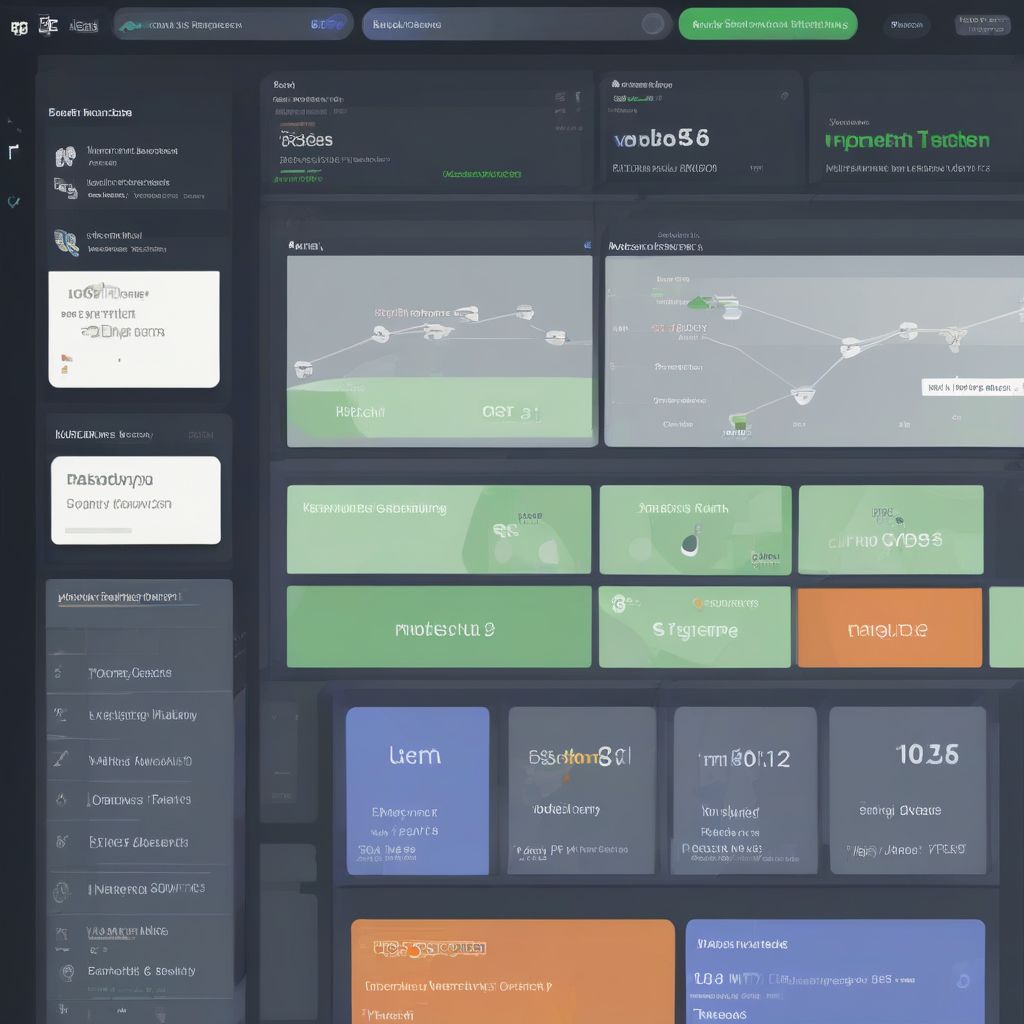In today’s digital landscape, where cyberattacks are becoming increasingly sophisticated, safeguarding sensitive data is paramount for businesses of all sizes. One critical aspect of maintaining a robust security posture is ensuring all software is up-to-date, effectively patching vulnerabilities that hackers could exploit. This is where Patch Management Software comes into play.
docudaiduong.com/wp-content/uploads/2024/08/patch-management-dashboard-66bc85.jpg" alt="A comprehensive dashboard displaying software updates and patches" width="1024" height="1024">A comprehensive dashboard displaying software updates and patches
Understanding Patch Management Software
Patch management software is an essential tool for IT professionals, automating the process of identifying, acquiring, testing, deploying, and verifying software patches across an organization’s entire IT infrastructure. These patches are code updates released by software vendors to fix security vulnerabilities, improve functionality, and enhance performance.
Why is Patch Management Software Critical?
The consequences of neglecting patch management can be severe. Unpatched vulnerabilities act as open doors for cybercriminals, potentially leading to:
- Data breaches: Hackers can exploit vulnerabilities to gain unauthorized access to sensitive data, leading to financial losses, legal ramifications, and reputational damage.
- Malware infections: Unpatched systems are easy targets for malware such as ransomware, spyware, and viruses, which can disrupt operations and compromise data integrity.
- System downtime: Exploited vulnerabilities can cause system crashes, slowdowns, or complete outages, impacting productivity and business continuity.
- Compliance violations: Many industries have regulatory requirements, like HIPAA or PCI DSS, that mandate regular patching to protect sensitive information. Failure to comply can result in hefty fines and penalties.
Key Features of Effective Patch Management Software
Choosing the right patch management software is crucial for streamlined security operations. Consider these key features:
- Automated Patch Discovery and Deployment: The software should automatically scan for missing patches across operating systems, applications, and network devices, and then deploy them efficiently with minimal user intervention.
- Patch Prioritization and Scheduling: Not all patches are created equal. The software should allow you to prioritize critical updates based on severity level and schedule deployments during off-peak hours to minimize disruption.
- Testing and Rollback Capabilities: Before deploying patches to the entire network, it’s crucial to test them in a controlled environment to ensure compatibility. The software should provide rollback options to revert changes if issues arise.
- Comprehensive Reporting and Auditing: Robust reporting features provide valuable insights into patch status, system vulnerabilities, and compliance standing, enabling proactive security management.
Addressing Common Concerns about Patch Management Software
While the benefits are clear, some organizations hesitate to implement patch management software due to concerns about:
- Complexity and Implementation Costs: Modern patch management solutions are designed to be user-friendly, and many vendors offer flexible deployment options, including cloud-based solutions, to minimize upfront costs.
- Compatibility Issues: Reputable patch management software undergoes rigorous testing to ensure compatibility with a wide range of operating systems and applications.
- Network Bandwidth Consumption: The software can be configured to download and deploy patches strategically, minimizing the impact on network bandwidth during critical business hours.
Real-world Examples of Patch Management Failures
The importance of patch management is often highlighted by high-profile security breaches that could have been prevented:
- WannaCry Ransomware Attack (2017): This global cyberattack exploited a vulnerability in Microsoft Windows, affecting hundreds of thousands of computers worldwide. Microsoft had released a patch for the vulnerability months prior, but many organizations had not applied it, leaving them vulnerable.
- Equifax Data Breach (2017): This massive data breach exposed the personal information of over 147 million people. It was later revealed that the breach was caused by a known vulnerability in Apache Struts, a popular open-source software framework. A patch for the vulnerability had been available for several months before the attack.
Conclusion: Don’t Wait for a Breach – Invest in Patch Management
In an era of ever-evolving cyber threats, patch management software is no longer optional – it’s a fundamental necessity. By automating and streamlining the patching process, you proactively protect your organization from vulnerabilities, ensuring data security, system stability, and regulatory compliance. Don’t wait for a breach to occur; invest in robust patch management software today.
